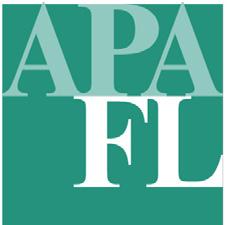

MIDDLE SCHOOL GRADE BAND PRESENTATION
COMMON CORE STANDARDS - MAPPED TO ACTIVITY




MIDDLE SCHOOL GRADE BAND PRESENTATION
COMMON CORE STANDARDS - MAPPED TO ACTIVITY

Brandon King, Instructional Designer prof.king.bk@gmail.com
Time: 8-11 min.

In this activity, the students will be introduced to the concept that planning is a process where stakeholders play varying roles in different stages, roles that they will assume through the day. Further, they will be introduced to the concept that planning involves more than just the officials in a planning or other governmental office. They will be guided through brainstorming about the kinds of individuals and entities that are considered “stakeholders” in the planning process, using a graphic organizer and other visual supports. Then, they will learn in more detail how these stakeholders are involved in the planning process and be assigned to roles.
KEY IDEAS AND DETAILS
• CCSS.ELA-LITERACY.RH.6-8.2
Determine the central ideas or information of a primary or secondary source; provide an accurate summary of the source distinct from prior knowledge or opinions.
CRAFT AND STRUCTURE
• CCSS.ELA-LITERACY.CCRA.R.4
Interpret words and phrases as they are used in a text, including determining technical, connotative, and figurative meanings, and analyze how specific word choices shape meaning or tone.
• CCSS.ELA-LITERACY.RH.6-8.4
Determine the meaning of words and phrases as they are used in a text, including vocabulary specific to domains related to history/social studies.
• CCSS.ELA-LITERACY.RH.6-8.6
Identify aspects of a text that reveal an author’s point of view or purpose (e.g., loaded language, inclusion or avoidance of particular facts).

INTEGRATION OF KNOWLEDGE AND IDEAS
• CCSS.ELA-LITERACY.CCRA.R.7
Integrate and evaluate content presented in diverse media and formats, including visually and quantitatively, as well as in words.
• CCSS.ELA-LITERACY.RH.6-8.7
Integrate visual information (e.g., in charts, graphs, photographs, videos, or maps) with other information in print and digital texts.
• CCSS.ELA-LITERACY.CCRA.R.10
Read and comprehend complex literary and informational texts independently and proficiently.
COMPREHENSION AND COLLABORATION
• CCSS.ELA-LITERACY.CCRA.SL.1
Prepare for and participate effectively in a range of conversations and collaborations with diverse partners, building on others’ ideas and expressing their own clearly and persuasively.
• CCSS.ELA-LITERACY.CCRA.SL.2
Integrate and evaluate information presented in diverse media and formats, including visually, quantitatively, and orally.
PRESENTATION OF KNOWLEDGE AND IDEAS
• CCSS.ELA-LITERACY.CCRA.SL.6
Adapt speech to a variety of contexts and communicative tasks, demonstrating command of formal English when indicated or appropriate.
CONVENTIONS OF STANDARD ENGLISH
• CCSS.ELA-LITERACY.CCRA.L.1
Demonstrate command of the conventions of standard English grammar and usage when writing or speaking.
VOCABULARY ACQUISITION AND USE
• CCSS.ELA-LITERACY.CCRA.L.4
Determine or clarify the meaning of unknown and multiple-meaning words and phrases by using context clues, analyzing meaningful word parts, and consulting general and specialized reference materials, as appropriate.

• CCSS.ELA-LITERACY.CCRA.L.6
Acquire and use accurately a range of general academic and domain-specific words and phrases sufficient for reading, writing, speaking, and listening at the college and career readiness level; demonstrate independence in gathering vocabulary knowledge when encountering an unknown term important to comprehension or expression.
Time: 32-40 min.
Learners engage in a case study and role play type activity to get them thinking about their community from the perspective of a planning professional and other stakeholders. They experience going through the planning process, using the scenario as context for writing their own unique planning document, which pulls from real types of data.
Time: Extension 1: 5 min. + Extension 2: 5-8 min.
In this module, the students will be given the chance to cement their knowledge in two extension activities. Extension 1 allows students the opportunity to show their expertise as they briefly present their plan to another group. Extension 2 uses a Pop Quiz format to facilitate discussion about the day’s activities and expand on concepts that were covered.
• CCSS.ELA-LITERACY.CCRA.R.1
Read closely to determine what the text says explicitly and to make logical inferences from it; cite specific textual evidence when writing or speaking to support conclusions drawn from the text.
• CCSS.ELA-LITERACY.CCRA.R.2
Determine central ideas or themes of a text and analyze their development; summarize the key supporting details and ideas.
• CCSS.ELA-LITERACY.RH.6-8.1
Cite specific textual evidence to support analysis of primary and secondary sources.
• CCSS.ELA-LITERACY.RH.6-8.2
Determine the central ideas or information of a primary or secondary source; provide an accurate summary of the source distinct from prior knowledge or opinions.
• CCSS.ELA-LITERACY.RH.6-8.3
Identify key steps in a text’s description of a process related to history/social studies (e.g., how a bill becomes law, how interest rates are raised or lowered).

• CCSS.ELA-LITERACY.CCRA.R.4
Interpret words and phrases as they are used in a text, including determining technical, connotative, and figurative meanings, and analyze how specific word choices shape meaning or tone.
• CCSS.ELA-LITERACY.CCRA.R.6
Assess how point of view or purpose shapes the content and style of a text.
• CCSS.ELA-LITERACY.RH.6-8.4
Determine the meaning of words and phrases as they are used in a text, including vocabulary specific to domains related to history/social studies.
• CCSS.ELA-LITERACY.RH.6-8.5
Describe how a text presents information (e.g., sequentially, comparatively, causally).
• CCSS.ELA-LITERACY.RH.6-8.6
Identify aspects of a text that reveal an author’s point of view or purpose (e.g., loaded language, inclusion or avoidance of particular facts).
• CCSS.ELA-LITERACY.CCRA.R.7
Integrate and evaluate content presented in diverse media and formats, including visually and quantitatively, as well as in words.
• CCSS.ELA-LITERACY.CCRA.R.8
Delineate and evaluate the argument and specific claims in a text, including the validity of the reasoning as well as the relevance and sufficiency of the evidence.
• CCSS.ELA-LITERACY.RH.6-8.7
Integrate visual information (e.g., in charts, graphs, photographs, videos, or maps) with other information in print and digital texts.
• CCSS.ELA-LITERACY.RH.6-8.8
Distinguish among fact, opinion, and reasoned judgment in a text.

• CCSS.ELA-LITERACY.CCRA.R.10
Read and comprehend complex literary and informational texts independently and proficiently.
• CCSS.ELA-LITERACY.RH.6-8.10
By the end of grade 8, read and comprehend history/social studies texts in the grades 6-8 text complexity band independently and proficiently.
• CCSS.ELA-LITERACY.CCRA.R.7
Integrate and evaluate content presented in diverse media and formats, including visually and quantitatively, as well as in words.
• CCSS.ELA-LITERACY.RH.6-8.7
Integrate visual information (e.g., in charts, graphs, photographs, videos, or maps) with other information in print and digital texts.
• CCSS.ELA-LITERACY.CCRA.SL.1
Prepare for and participate effectively in a range of conversations and collaborations with diverse partners, building on others’ ideas and expressing their own clearly and persuasively.
• CCSS.ELA-LITERACY.CCRA.SL.2
Integrate and evaluate information presented in diverse media and formats, including visually, quantitatively, and orally.
• CCSS.ELA-LITERACY.CCRA.SL.3
Evaluate a speaker’s point of view, reasoning, and use of evidence and rhetoric.
• CCSS.ELA-LITERACY.CCRA.SL.4
Present information, findings, and supporting evidence such that listeners can follow the line of reasoning and the organization, development, and style are appropriate to task, purpose, and audience.
• CCSS.ELA-LITERACY.CCRA.SL.5
Make strategic use of digital media and visual displays of data to express information and enhance understanding of presentations.

• CCSS.ELA-LITERACY.CCRA.SL.6
Adapt speech to a variety of contexts and communicative tasks, demonstrating command of formal English when indicated or appropriate.
• CCSS.ELA-LITERACY.CCRA.L.1
Demonstrate command of the conventions of standard English grammar and usage when writing or speaking.
• CCSS.ELA-LITERACY.CCRA.L.3
Apply knowledge of language to understand how language functions in different contexts, to make effective choices for meaning or style, and to comprehend more fully when reading or listening.
• CCSS.ELA-LITERACY.CCRA.L.4
Determine or clarify the meaning of unknown and multiple-meaning words and phrases by using context clues, analyzing meaningful word parts, and consulting general and specialized reference materials, as appropriate.
• CCSS.ELA-LITERACY.CCRA.L.6
Acquire and use accurately a range of general academic and domain-specific words and phrases sufficient for reading, writing, speaking, and listening at the college and career readiness level; demonstrate independence in gathering vocabulary knowledge when encountering an unknown term important to comprehension or expression.